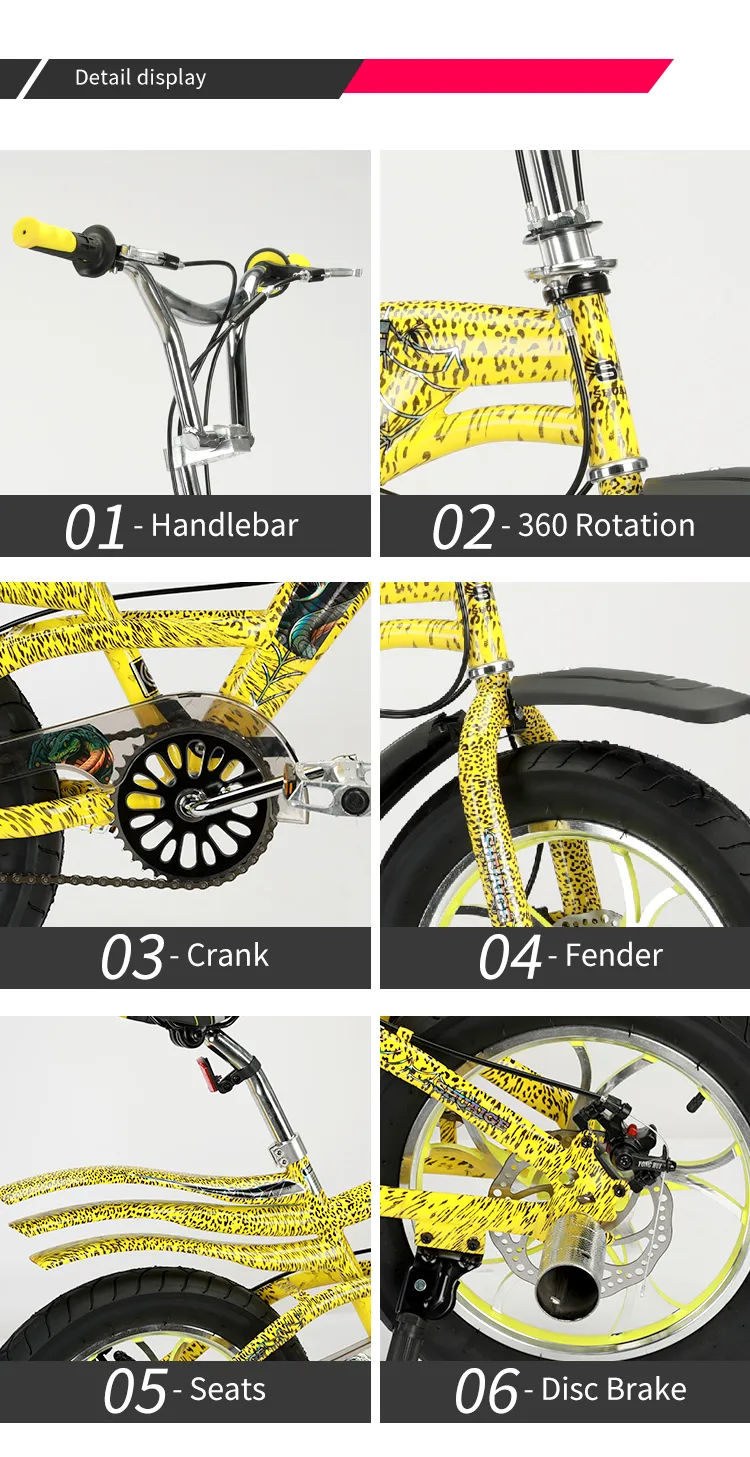12 月 . 03, 2024 16:57 Back to list
differences in mountain bikes
Differences in Mountain Bikes A Comprehensive Overview
Mountain biking has grown immensely in popularity over the past few decades, attracting riders from all walks of life. While the fundamental concept of mountain biking—riding on rough terrain—remains constant, the bikes themselves have evolved significantly, offering a range of options for various terrain, riding styles, and personal preferences. This article will explore the differences in mountain bikes, helping prospective buyers and enthusiasts understand the key features that set them apart.
1. Type of Mountain Bikes
The primary distinction among mountain bikes lies in their design and intended use. There are several types of mountain bikes tailored for different riding styles
- Cross-Country (XC) Bikes These bikes are lightweight and built for speed and efficiency on climbing and elongated rides. They typically feature a single front chainring and 29-inch wheels, allowing for quicker transitions and better rolling over obstacles.
- Trail Bikes Designed for versatility, trail bikes offer a balance of climbing efficiency and downhill capability. They generally have a longer travel suspension (130-150mm) and can accommodate a variety of terrains. Trail bikes are the most popular choice for all-around mountain bikers.
- All-Mountain Bikes Also referred to as enduro bikes, these offer more robust suspension systems and are built for more aggressive trails. They prioritize downhill performance while still maintaining the ability to climb reasonably well, making them ideal for riders who enjoy long descents after hard climbs.
- Downhill (DH) Bikes These bikes are specifically made for steep, rocky terrains and are designed to descend at high speeds. They feature long-travel suspension (200mm or more) and are heavy, emphasizing strength over weight to handle the rigors of downhill racing.
- Fat Bikes With oversized tires, fat bikes are engineered to ride on soft terrains such as snow and sand. They offer increased traction and stability, making them an appealing option for adventurous riders looking to explore off the beaten path under challenging conditions.
2. Suspension Systems
One of the most significant differences in mountain bikes is their suspension systems. Suspension can be broadly classified into two categories hardtail and full-suspension.
- Hardtail Bikes These bikes come with a front suspension only, providing a lighter and simpler design. Hardtails are often preferred for cross-country riding due to their efficiency on climbs. However, they can be less forgiving on rough descents.
- Full-Suspension Bikes Full-suspension bikes feature both front and rear suspension, significantly enhancing comfort and control on uneven terrain. They absorb more bumps and provide better traction, proving advantageous, especially on technical trails.
differences in mountain bikes

3. Wheel Size
The size of the wheels is another crucial factor impacting performance
. Mountain bikes typically come with three wheel sizes 26”, 27.5” (650b), and 29”.- 26-inch Wheels Once the industry standard, they are now less common but provide great maneuverability and acceleration.
- 27.5-inch Wheels These wheels combine the advantages of both smaller and larger sizes, offering a balance of agility and stability.
- 29-inch Wheels Ideal for rolling over obstacles and maintaining speed, 29-inch wheels provide excellent traction and efficiency, making them a popular choice for cross-country and trail riding.
4. Frame Materials
Mountain bikes are constructed from various materials, each with its pros and cons. Common materials include
- Aluminum Lightweight and affordable, aluminum is a popular choice for many mountain bikes. However, it can be less forgiving than other materials.
- Carbon Fiber Known for its lightweight and strength, carbon fiber has become increasingly popular in high-end bikes. It absorbs vibrations well but comes with a higher price tag.
- Steel While heavier, steel frames offer durability and a comfortable ride, making them ideal for long-distance riders.
Conclusion
Understanding the differences in mountain bikes is essential for making an informed purchase. Each type, suspension system, wheel size, and frame material serves a specific purpose, catering to various riding styles and preferences. Whether you’re a seasoned rider or a newcomer to the sport, selecting the right mountain bike can significantly enhance your riding experience and ensure that you have the best adventures possible on the trails.
-
Toy Car with Parental Remote - Safe Electric Ride-On Car with Parental Control
NewsJun.10,2025
-
Cheap Bikes for Students - Affordable & Durable Student Bicycles Online
NewsJun.10,2025
-
Children Balance Bike Lightweight & Adjustable OEM Designs
NewsMay.30,2025
-
Junior BMX Race Bikes Lightweight, Durable & Speed-Optimized
NewsMay.30,2025
-
21-Speed Foldable Gear Cycle Compact & Portable Commuter Bike
NewsMay.30,2025
-
Affordable & Durable Bikes for Students Campus Commutes Made Easy
NewsMay.29,2025



